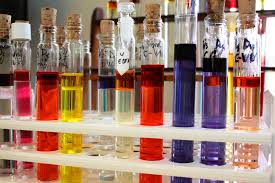Fast and efficient removal of alizarin yellow dye (Azo dye) from water and wastewater samples using modified nanoclay
Keywords:
Alizarin yellow;Isotherm;Montmorillonite;Nanoclay;RemovalAbstract
A fast and efficient method has been developed for removal of Alizarin Yellow dye using modified nanoclay. Montmorillonite (MMT) was modified by a facile and one-step procedure with diethylenetriamine (DETA) and was used as an adsorbent. The effects of pH value of the dye solution, adsorbent dose, adsorption time and the initial dye concentration on the Alizarin Yellow adsorption onto the composite were investigated. The DETA-MMT had a high uptake capacity in room temperature and could remove Alizarin Yellow dye of about 85 % with 6 g/L of adsorbent, in only 2 min. Langmuir and Freundlich isotherms were employed for the study of the adsorption of Alizarin Yellow dye onto DETA-MMT. The method was applied to the removal of Alizarin Yellow in different tap water, river water and industrial wastewater samples.
References
Abollino, A., Giacomino, M., Malandrino, M., Mentasti, E., 2008. Interaction of Metal Ion with montmorillonite and vermiculite. Appl. sci., 38, 227-236.
Ahmad, M.B., Hoidy, W.H., Ibrahim, N.A.B., Al-Mulla, E.A.J., 2009. Modification of montmorillonite by New Surfactant. J. Eng. of Sci., 4, 184-188.
Balomenou, G., Stathi, P., Enotiadis, A., Goumis, D., Deligiannakis, Y., 2008. Physicochemical Study of Amino-Functionalized Organosilicon Cubes Intercalated in Montmorillonite Clay: H-binding and Metal Up Take. J. Colloid Interface Sci., 112, 12841-12852.
Gu, x., Evans, L.J., Barabash, S.J., 2010. Modeling the Adsorption of Cd(II), Cu(II), Ni(II), Pb(II), and Zn(II) onto montmorillonite. Cosmochim. Acta., 14, 5718-5728.
Manocha, S., Patel, N., Manocha, L.M., 2008. Development and Characterization of Nanoclay from Indian Clay. Defence Sci. J., 58, 517-524.
Perju, M.M., Dragan E.S., 2010. Removal of azo Dyes from Aqueous Solution using Chitosan based Composite Hydro gels. Ione Exchange Letters. 3, 7-11.
Pourreza, n., elhami, S.h., 2010. Removal of Malachite Green from Water Samples by Cloud Point Extraction using Triton x-100 as Non-ionic Surfactant. Env. Chem. Letter., 8, 53-57.
Saad, S.A., Isa, K. M.d., Bahar, R., 2010. Chemically Modified Sugarcane Bagasse as Potentially Low-Cost Biosorbent for Dye Removal. Desalination., 246, 123-128.
Salman, M., Athar, M., Shafique, U., Din, M.I., Rehman, R., Akram, A., Ali, S.Z., 2010. Adsorption Modeling of Alizarin Yellow on Untreated and Treated Charcoal. J. Env. Eng. Sci., 35, 1-8.
Shahmohammadi-Kalalagh, S.h., Babazadeh, H.A., Nazemi, H., Manshouri, M., 2011. Isotherm and Kinetic Studies on Adsorption of Pb, Zn and Cu by Kaolinite. Caspian J. Env. Sci., 9, 243-255.
Shiau, C.Y., Pan, C.C., 2004. Adsorbtion of Basic Dyes from Aqueous Solution by Various Adsorbent. Separat. Sci. Technol., 39, 1733-1750.
Syed, D., Arshad Hussain, S., Chakraborty, R.A., Schoonheydt, R.A., 2010. Effect of Nano-Clay Platelets on the Aggregation of Thiyacyanine Dye Organized in Langmuir-blodgett Film. Spectrochimica Acta A., 77, 232-237.
Wang, L., Wang, A., 2008. Adsorption Properties of Congo Red from Aqueous Solution by Various adsorbents. Separat. Sci. Technol., 39, 1733-1750.
Xi, y., Ding, Z., He, H., Frost, R.L., 2004. Structure of Organo Clay an X-ray Diffraction and Thermogravimetric Analysis. J. Colloid Interface Sci., 227, 116-120.

Downloads
Published
How to Cite
Issue
Section
License
Copyright (c) 2014 Shahla Elhami, Hadis Drikvandi

This work is licensed under a Creative Commons Attribution-NonCommercial-NoDerivatives 4.0 International License.



